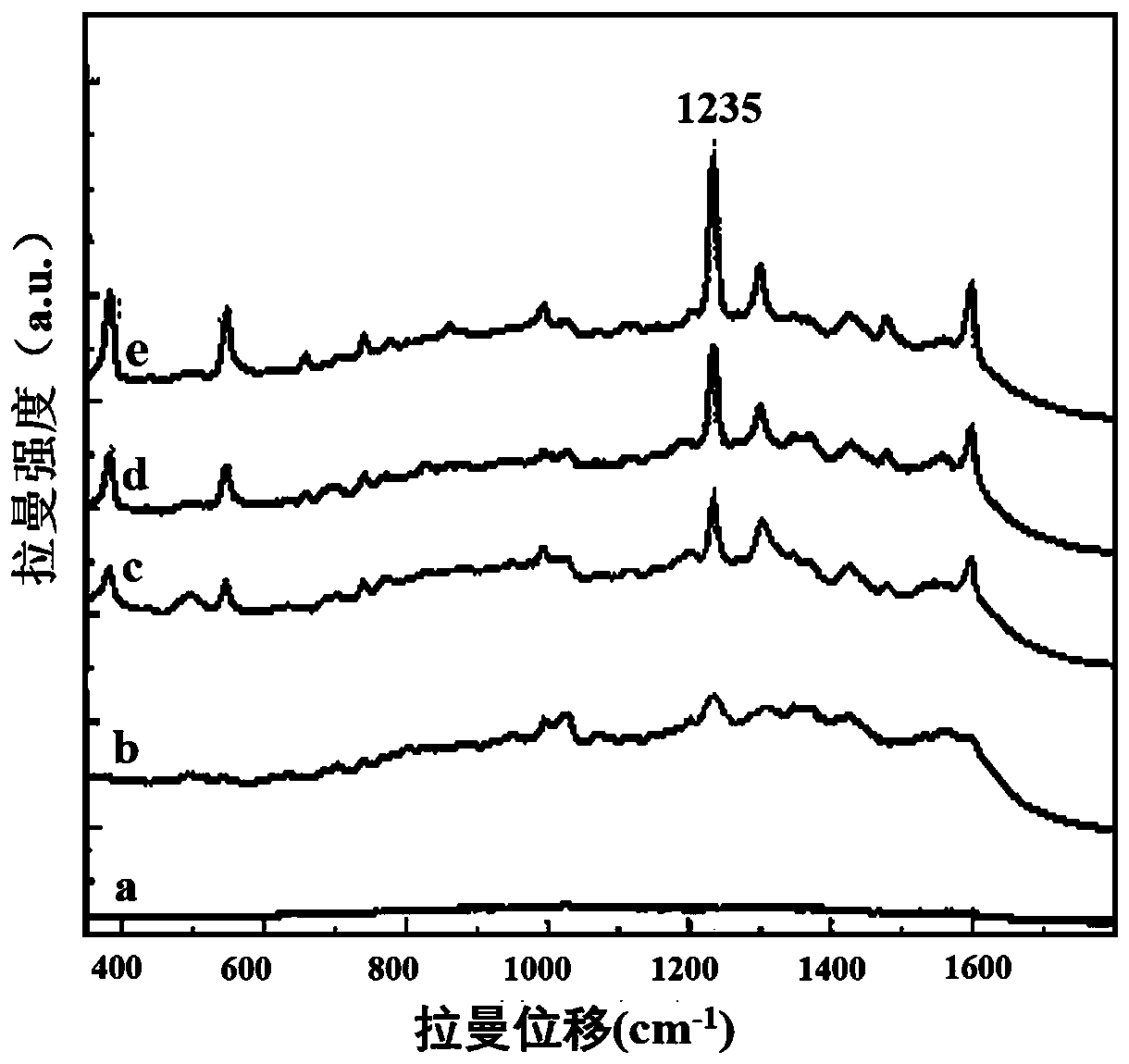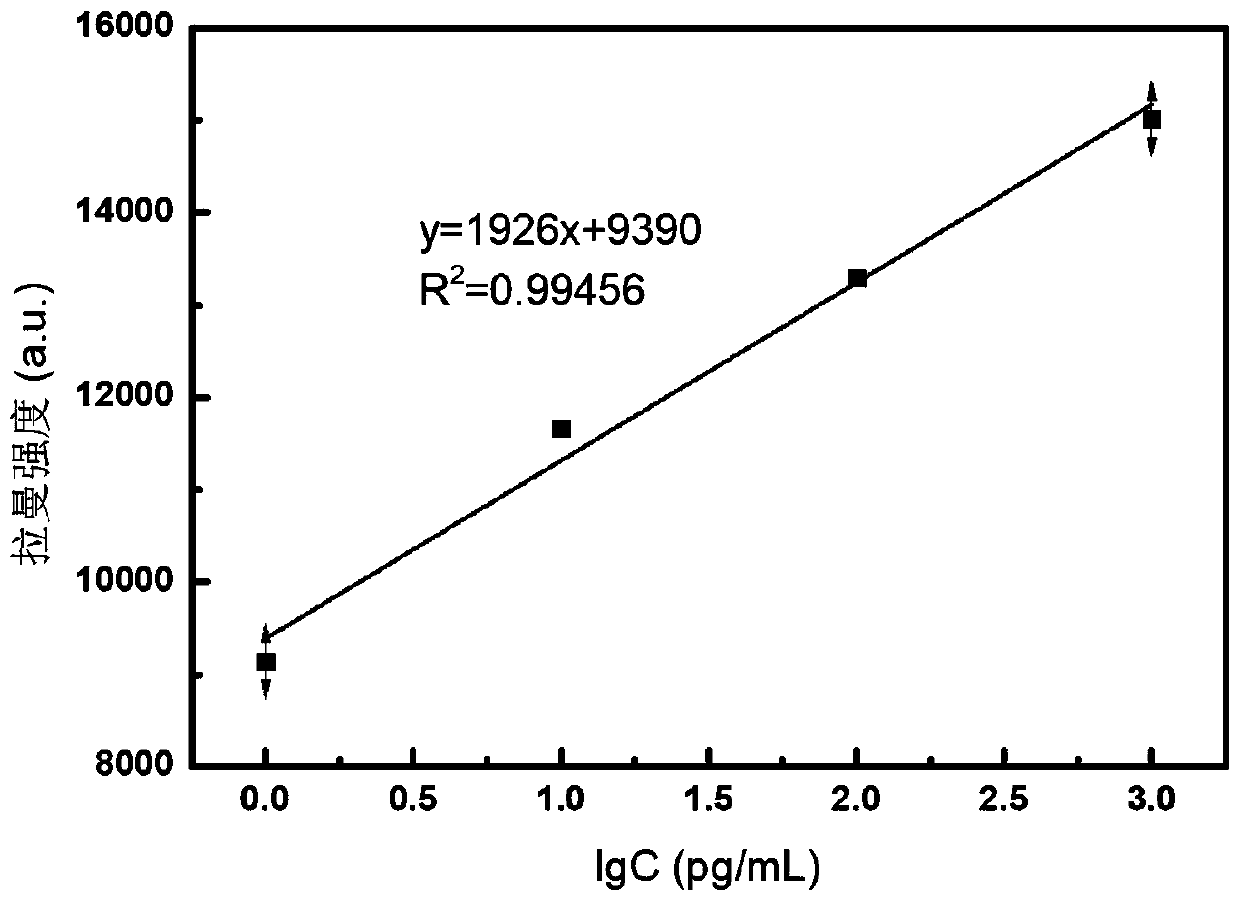Detection method for detecting dioxin and polychlorinated biphenyl
A detection method, the technology of polychlorinated biphenyls, applied in the field of environmental pollution detection, can solve the problems of sensitive detection of difficult dioxins and polychlorinated biphenyls, affecting the accuracy and sensitivity of detection results, and difficult to achieve the reunion effect, so as to improve the Accuracy and sensitivity, excellent Raman scattering characteristics, and the effect of reducing detection costs
- Summary
- Abstract
- Description
- Claims
- Application Information
AI Technical Summary
Problems solved by technology
Method used
Image
Examples
Embodiment 1
[0059] The present embodiment provides a kind of detection method for detecting dioxin and polychlorinated biphenyls, comprises the following steps:
[0060] S1. Mix 0.05g of silver nitrate and 2g of polyvinylpyrrolidone and dissolve in 10mL of deionized water. After fully stirring in an ice-water bath, add 0.03g of ascorbic acid. After fully stirring, react at room temperature for 15min at a speed of 6000r / min. Centrifuge the product for 5 minutes, then wash the centrifuged precipitate three times with ultrapure water to obtain micronano silver particles with an average particle diameter of 1.1 μm; disperse the micronano silver particles in ultrapure water to obtain micronano silver particles Suspension A at a concentration of 40 mg / mL.
[0061] S2. After mixing 240mg sodium molybdate and 30mg graphene oxide, fully disperse them in 25mL deionized water, then add 300mg thiourea, and after fully stirring, transfer the solution to a 50mL polytetrafluoroethylene-lined stainless s...
Embodiment 2~12 and comparative example 1~2
[0079] Embodiments 2 to 12 and comparative examples 1 to 2 respectively provide a detection method for detecting dioxins and polychlorinated biphenyls. Compared with Example 1, the difference is that suspension A and suspension B have been changed. Or the concentration of suspension C.
[0080] Among them, Examples 2-5 only changed the concentration of suspension A, and the concentrations of Suspension A corresponding to Examples 2-5 were 30 mg / mL, 35 mg / mL, 45 mg / mL and 50 mg / mL in turn. 2,3,7,8-tetrachlorodibenzo-p-dioxin in sample 1 and 3,3',4,4'- Tetrachlorobiphenyl is detected, and it is compared with embodiment 1, obtains the variation curve of the main characteristic peak intensity of each sample to be tested with the concentration of suspension A, as Figure 5 shown.
[0081] Depend on Figure 5 It can be seen that with the increase of the concentration of suspension A, the measured main characteristic peak intensity corresponding to dioxins and PCBs showed a trend ...
PUM
| Property | Measurement | Unit |
|---|---|---|
| concentration | aaaaa | aaaaa |
| particle size | aaaaa | aaaaa |
| particle size | aaaaa | aaaaa |
Abstract
Description
Claims
Application Information
 Login to View More
Login to View More - R&D
- Intellectual Property
- Life Sciences
- Materials
- Tech Scout
- Unparalleled Data Quality
- Higher Quality Content
- 60% Fewer Hallucinations
Browse by: Latest US Patents, China's latest patents, Technical Efficacy Thesaurus, Application Domain, Technology Topic, Popular Technical Reports.
© 2025 PatSnap. All rights reserved.Legal|Privacy policy|Modern Slavery Act Transparency Statement|Sitemap|About US| Contact US: help@patsnap.com



